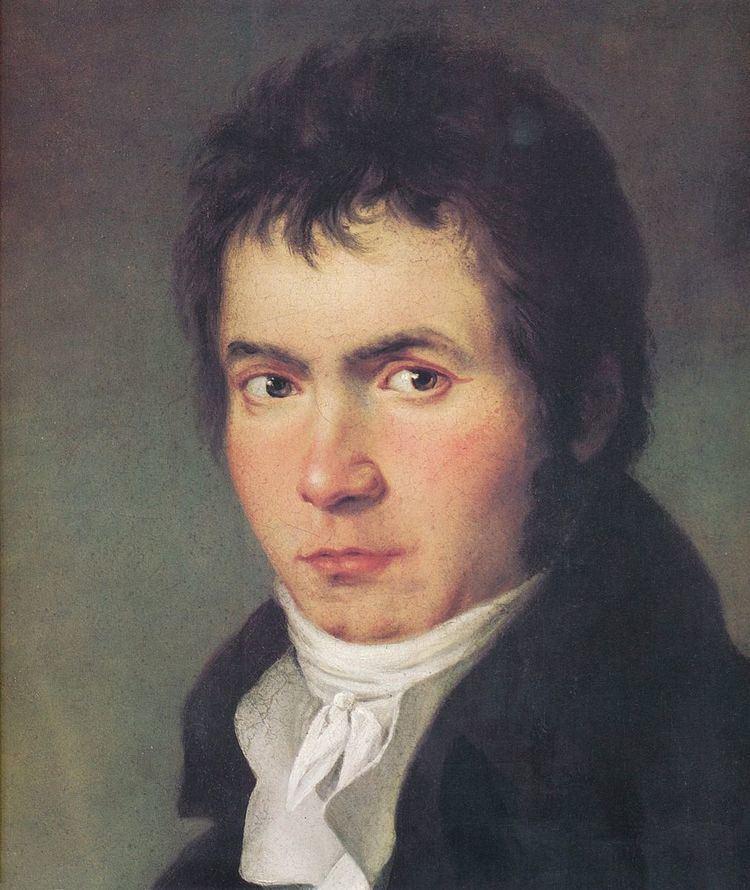 | ||
The Symphony No. 4 in B♭ major, Op. 60, is a symphony in four movements composed by Ludwig van Beethoven in the summer of 1806. It was premièred in March 1807 at a private concert of the home of Prince Franz Joseph von Lobkowitz.
Contents
Background
The work was dedicated to Count Franz von Oppersdorff, a relative of Beethoven's patron, Prince Lichnowsky. The Count met Beethoven when he traveled to Lichnowsky's summer home where Beethoven was staying. Von Oppersdorff listened to Beethoven's Symphony No. 2 in D Major, and liked it so much that he offered a great amount of money for Beethoven to compose a new symphony for him. Beethoven undertook the new work during the summer of 1806 and completed it in roughly a month, while working on the Fourth Piano Concerto and revising his opera Fidelio, then still known as Leonore. The dedication was made to "the Silesian nobleman Count Franz von Oppersdorf". Hector Berlioz was so enamoured of the symphony's 2nd movement that he claimed it was the work of the Archangel Michael, and not that of a human. Robert Schumann called Beethoven's graceful Fourth Symphony "a slender Greek maiden between two Norse giants" (i.e., the ponderous 3rd and 5th).
Instrumentation
The symphony is scored for flute, 2 oboes, 2 clarinets in B♭, 2 bassoons, 2 horns in B♭ and E♭, 2 trumpets in B♭ and E♭, timpani and strings.
Movements
The work is in four movements:
- Adagio – Allegro vivace, 2
2 (B♭ minor – B♭ major) - Adagio, 3
4 (E♭ major) - Allegro vivace, 3
4 (B♭ major) - Allegro ma non troppo, 2
4 (B♭ major)
The work takes about 33 minutes to perform.
In general the symphony is sunny and cheerful, with light instrumentation in a manner that recalls the symphonies of Joseph Haydn, with whom Beethoven had studied a decade before. The Fourth Symphony contrasts with the swooping changes of Beethoven's composition style in the previous Third Symphony, and is often overshadowed by both its predecessor and following work, the celebrated Fifth Symphony which Beethoven had set aside to complete the Fourth. Despite being written in a style more akin to that of Beethoven's first two symphonies, the Fourth contains many aspects that show his growing strength as a composer, most notably the B♭ minor Adagio introduction to the first movement, which Leonard Bernstein described as a "mysterious introduction which hovers around minor modes, tip-toeing its tenuous weight through ambiguous unrelated keys and so reluctant to settle down into its final B♭ major."
